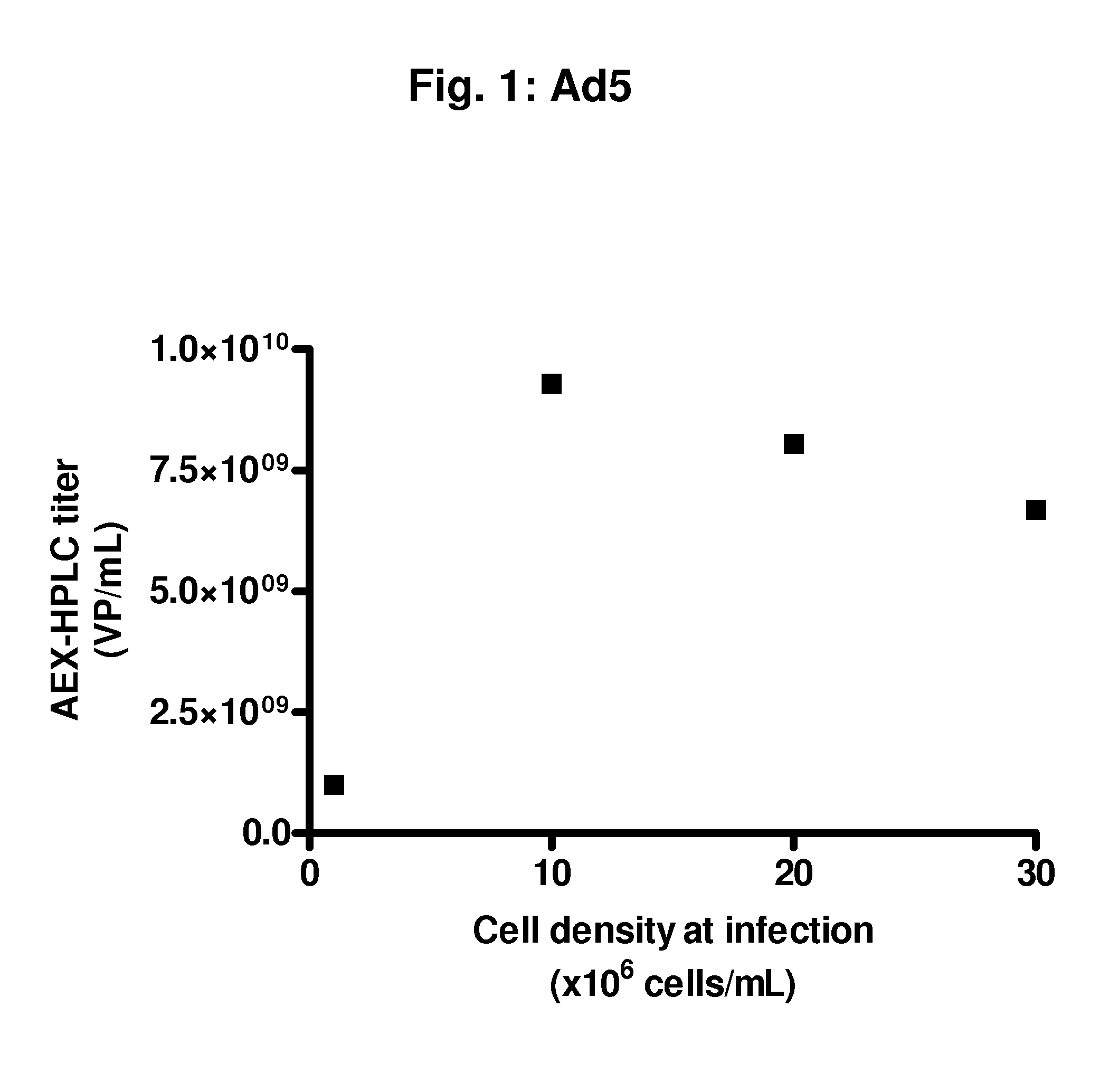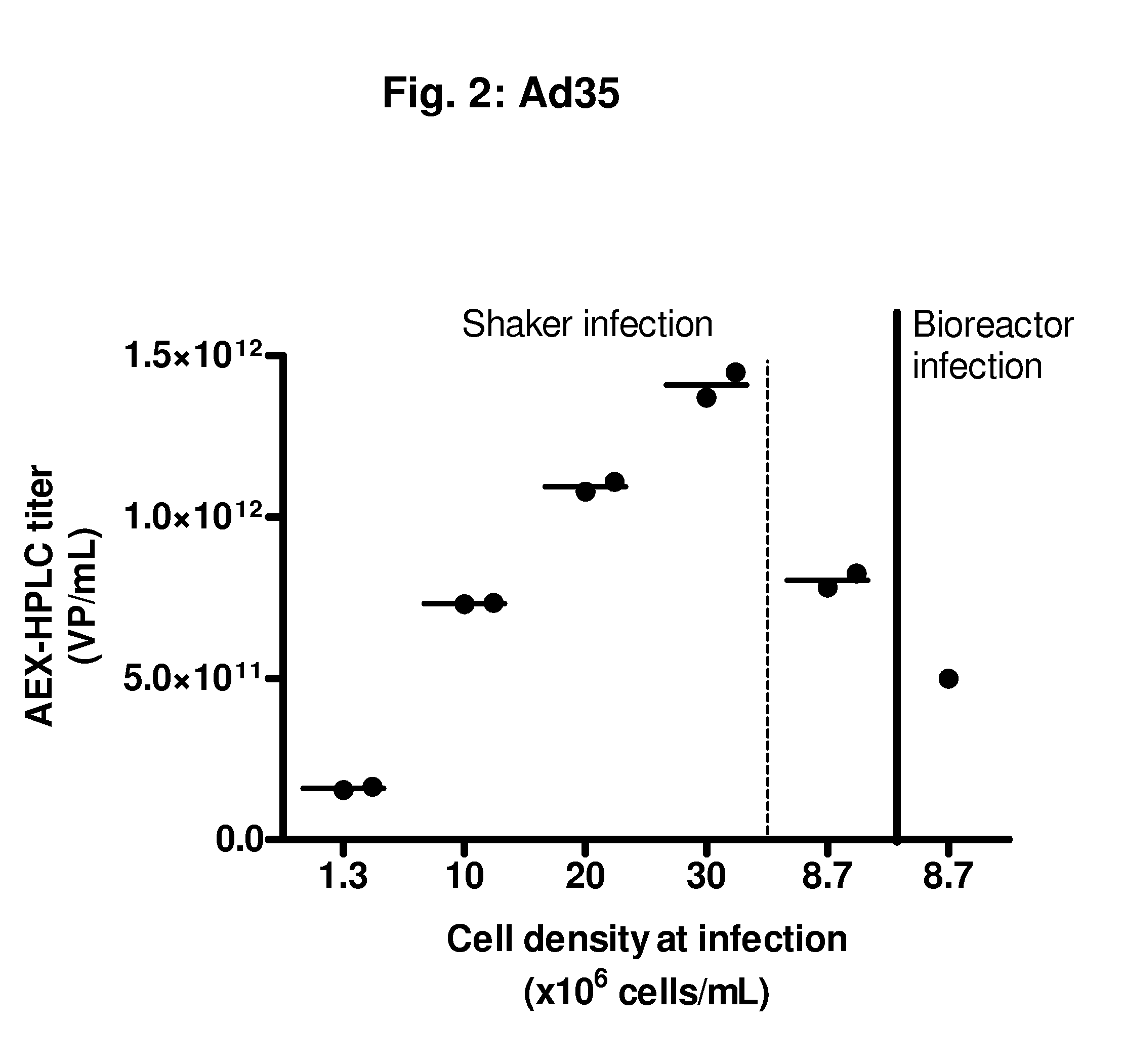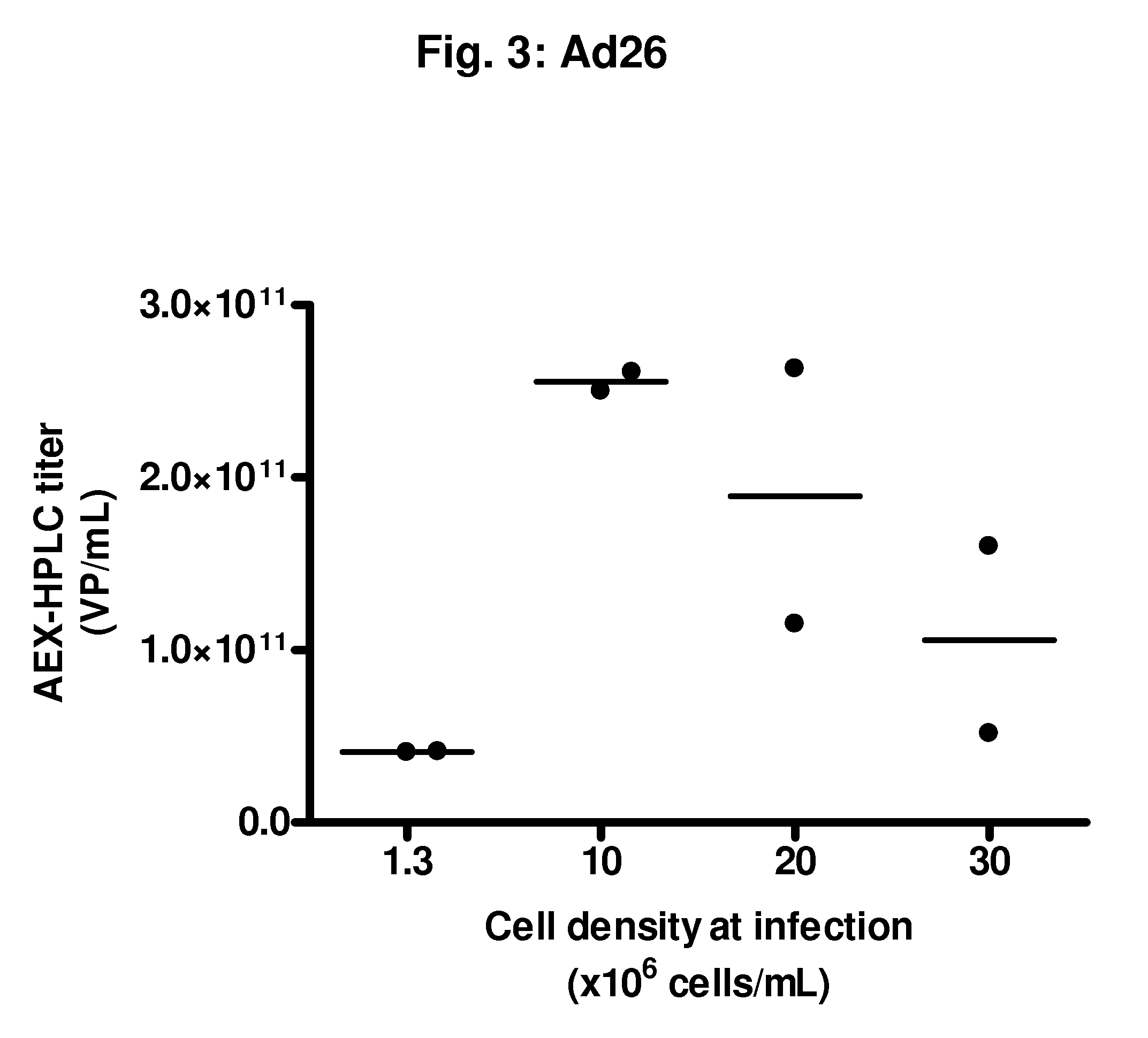METHOD FOR THE PRODUCTION OF Ad26 ADENOVIRAL VECTORS
a technology of adenovirus and cell culture, which is applied in the field of cell culture and adenovirus production, can solve the problems of high capital investment (capex) needed to design and build a 10,000 l bioreactor facility, inability to meet the worldwide demand for adeno-based vaccines, and no available commercial medium to date has shown potential to support high yields, etc., to achieve the effect of reducing the growth post infection, facilitating harvesting, and reducing the growth pos
- Summary
- Abstract
- Description
- Claims
- Application Information
AI Technical Summary
Benefits of technology
Problems solved by technology
Method used
Image
Examples
example 1
Infection at High Cell Densities with an Ad5 Vector
[0091]From a PER.C6® working cell bank, cells were thawed and propagated in serum-free culture medium in a humidified incubator at 37° C. and 10% CO2. Subculture was performed every 3 to 4 days until sufficient cell density was reached to inoculate a 2 L bioreactor at a volume of 1.5 L and a cell density of 0.2 to 0.5×106 viable cells / mL. Cells were propagated in the bioreactor at 37° C., DO of 40%, and a pH of 7.3. The ATF perfusion process was started at a cell density of 4.7×106 total cells / mL. The ATF was from Refine Technology, Co., East Hanover, N.J. After 89 hours, a cell density was reached of 12.4×106 total cells / mL. At this moment, a part of the cells were harvested and the cells were centrifuged for 5 minutes at 300 g. The cell pellet was re-suspended to the following concentrations in fresh serum-free medium:[0092]1.3×106 viable cells / mL, 30 mL / shaker, two 250 mL shakers[0093]10×106 viable cells / mL, 30 mL / shaker, two 250...
example 2
Infection with rAd35 at Low Cell Densities (1-1.6×106 Viable Cells / mL)
[0098]In Example 1, rAd5 was used. However, different adenovirus serotypes are known and have been described for different purposes. These serotypes may have different properties and, hence, processes useful for one serotype are not always necessarily suitable for another serotype. This may especially be relevant in industrial scale processes, where seemingly small differences may be economically of great importance. One particularly advantageous serotype for use in, for instance, vaccines is Ad35, and in the following examples, we test the feasibility to improve yields of rAd35 to obtain large quantities thereof. This example shows infection with a rAd35 vector at low cell densities, as a comparison to the following examples where cells are infected at higher cell densities.
[0099]From a PER.C6® working cell bank, cells were thawed and propagated in serum-free culture medium in a humidified incubator at 37° C. and...
example 3
Feasibility Study of an Infection Process with rAd35 at High Cell Densities (>10×106 Viable Cells / mL)
[0101]From a PER.C6® working cell bank, cells were thawed and propagated in serum-free culture medium in a humidified incubator at 37° C. and 10% CO2. Subculture was performed every 3 to 4 days until sufficient cell density was reached to inoculate a 2 L bioreactor at a volume of 1.5 L and a cell density of 0.2 to 0.5×106 viable cells / mL. Cells were propagated in the bioreactor at 37° C., DO of 40%, and a pH of 7.3. Medium perfusion was started at a cell density of 6.8×106 total cells / mL, using an ATF system. After 70 hours, a cell density was reached of 36.8×106 total cells / mL. At this moment, the following infections were performed:[0102]Infection in shakers at cell densities of:[0103]1.3×106 viable cells / mL, 30 mL / shaker, two 250 mL shakers[0104]10×106 viable cells / mL, 30 mL / shaker, two 250 mL shakers[0105]20×106 viable cells / mL, 30 mL / shaker, two 250 mL shakers[0106]30×106 viable...
PUM
| Property | Measurement | Unit |
|---|---|---|
| volume | aaaaa | aaaaa |
| volume | aaaaa | aaaaa |
| volume | aaaaa | aaaaa |
Abstract
Description
Claims
Application Information
 Login to View More
Login to View More - R&D
- Intellectual Property
- Life Sciences
- Materials
- Tech Scout
- Unparalleled Data Quality
- Higher Quality Content
- 60% Fewer Hallucinations
Browse by: Latest US Patents, China's latest patents, Technical Efficacy Thesaurus, Application Domain, Technology Topic, Popular Technical Reports.
© 2025 PatSnap. All rights reserved.Legal|Privacy policy|Modern Slavery Act Transparency Statement|Sitemap|About US| Contact US: help@patsnap.com



